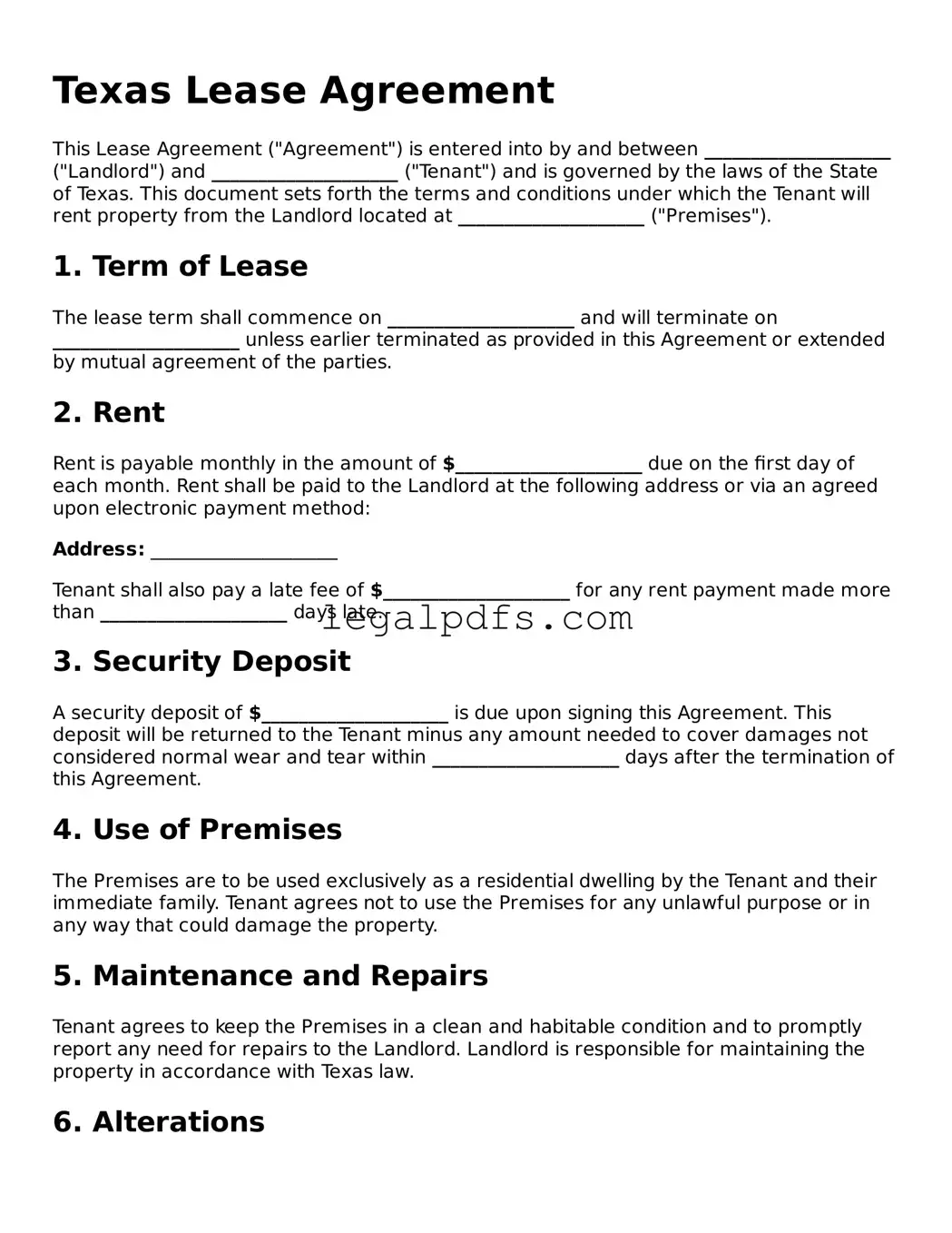What is a Texas Lease Agreement?
A Texas Lease Agreement is a legally binding document between a landlord and a tenant that outlines the terms under which the tenant can rent property from the landlord in Texas. This agreement covers details such as rent amount, security deposit, property description, lease term, and rights and responsibilities of both parties.
Is a written Lease Agreement required in Texas?
Yes, in Texas, while verbal agreements can be legally binding for tenancies less than one year, it is highly recommended to have a written Lease Agreement. This helps in clearly documenting the terms and conditions, reducing potential disputes between landlords and tenants.
How can a tenant terminate a Lease Agreement early in Texas?
Tenants can legally terminate a Lease Agreement early in Texas under specific circumstances such as active military duty, if the dwelling violates Texas health and safety codes, or through early termination clauses in their lease. It's important to review the lease for any specific conditions and communicate intentions clearly in writing to the landlord.
What are the landlord’s responsibilities in Texas regarding lease agreements?
Landlords in Texas are required to ensure the rented property is habitable and meets health and safety standards. They must make any necessary repairs promptly, respect the tenant's privacy, and adhere to the terms of the Lease Agreement, including any agreed-upon repairs or maintenance.
Can landlords in Texas require a security deposit?
Yes, landlords in Texas can require a security deposit from tenants. The amount is typically not limited by state law but should be reasonable. The deposit is held to cover any potential damage to the property, beyond normal wear and tear, or unpaid rent by the tenant.
How is the security deposit returned in Texas?
The security deposit must be returned to the tenant within 30 days after the lease ends and the tenant vacates the property, provided the tenant gives the landlord a forwarding address. Deductions for damages, unpaid rent, or other obligations must be itemized and sent to the tenant within the same timeframe.
What rights do tenants have under a Texas Lease Agreement?
Tenants in Texas have the right to a habitable living environment, the right to privacy, and the right to have their security deposit returned in accordance with state laws. They also have the right to repair and deduct for critical repairs not addressed by the landlord, after proper notice is given.
Can a Lease Agreement be modified in Texas?
Yes, a Lease Agreement in Texas can be modified if both the landlord and tenant agree to the changes. Any modifications should be made in writing and signed by both parties to ensure the changes are legally binding.
What happens if a tenant violates the Lease Agreement in Texas?
If a tenant violates the Lease Agreement in Texas, the landlord may have grounds to evict the tenant. The process involves providing notice to the tenant, allowing time for rectification of the violation if applicable, and proceeding with eviction filings through the court if necessary. Legal reasons for eviction include non-payment of rent and violation of lease terms.
Are pets allowed in rental properties in Texas?
The allowance of pets in rental properties in Texas is at the discretion of the landlord. If pets are allowed, the Lease Agreement should outline any conditions or restrictions, such as size, type, and number of pets, and any additional security deposit or pet rent required.
